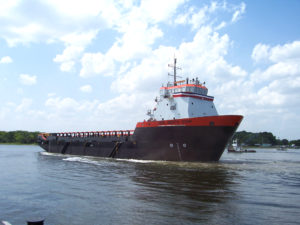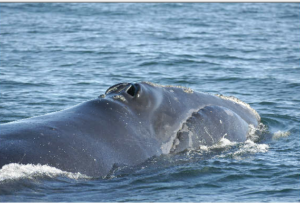
Farris Windmill at its final Cape Cod location in West Yarmouth from 1928, courtesy of the Dennis Historical Society
Windmills have been an important and beautiful part of the charm and history of Cape Cod since it was first settled by Europeans four centuries ago. Though they are rarely used for their original purposes, which included grinding corn, these legendary wooden structures still remain a link to the Cape’s past. Some of the most beloved windmills on the Cape, such as the Jonathan Young Windmill in Orleans, Godfrey Windmill in Chatham, and the Eastham Windmill are popular photograph sites and picnic areas. However despite the history and importance of these pieces of architecture did you know that there is an even older Cape Cod mill? It is purported to be nearly a half century older than the Eastham Windmill however it is likely that only a rare few who have lived on, or visited the Cape, have ever seen it. The reason? It no longer resides on the peninsula. Yes, Cape Cod’s oldest windmill does not stand on Cape Cod. This is the story of the Farris Windmill.
The origins of the Farris Windmill go back nearly 400 years to the infancy of not only Cape Cod but the country as a whole. In 1620 the Pilgrims landed at Provincetown and then onto Plymouth. Seven years later the Aptucxet Trading Post became the first such outpost on Cape Cod in the present-day town of Bourne. Six years after that, in 1633, the story of the Farris Mill is purported to have begun.
The Dutch-style windmill built of wood was first erected near the town line of Sandwich and Barnstable on the north side of Cape Cod making it one of the oldest windmills in the country. Windmills were quite commonplace during the initial few hundred years of America’s existence, allowing settlers to take advantage of wind power thus not needing to live close to water to thrive.
The first move of the windmill would occur in 1750 when it was bought by Lot Crowell and moved to the Lower Village of Bass River. Moving such a structure required numerous men and teams of oxen as the two millstones used to grind the corn, wheat and more weighed three and a half tons. With mill makers being in short supply it was more common for a mill to be moved rather than a new one being built. The windmill would be set near the water on the western bank of Bass River north of present-day Route 28.
The time in the Lower Village was relatively short as the mill would be purchased in 1782 by Captain Samuel Farris and moved to his Farris Field in South Yarmouth. It was after this purchase and move that the mill would become known as Farris Windmill. The three-story tower with sails measuring fifty-four feet across would remain in the Farris family for three generations. In 1894 the mill would be sold and moved a third time. This time it was purchased by F.A. Abell and moved to the present-day intersection of Route 28 and Berry Avenue in West Yarmouth directly across from where the Yarmouth Chamber of Commerce currently stands. Abell would place the mill close to his estate, today there is an Abells Road within sight of the location.
After Abell’s death the windmill was sold to Dr. Edward Gleason of Hyannis and Boston. He would see the mill restored and open to the public. This effort brought major attention to the Farris Windmill. Gleason was approached in 1935 by a group of Ford automobile dealers who wished to buy the mill and have it moved to Dearborn, Michigan as a gift for their founder Henry Ford. Eight years earlier Gleason had attempted to give the mill and six acres of land to the town of Yarmouth, however they balked at the potential taxes on the property claiming the town was too poor to afford it.
There was much public outcry of the potential move of the windmill, Gleason was there to remind the town of his attempted gift. Henry Ford actually did not want the windmill at first either. In 1926 Ford had actually approached Gleason about purchasing another historic spot, the Baxter Mill, located further down Route 28 in West Yarmouth. Gleason would immediately turn his offer down. He would however convince Ford to take the Farris Windmill stating that rebuilding it in a museum setting would preserve it better than leaving it to the harsh Cape Cod elements. Gleason said it was a little late for locals to care and the mill was sold in November 1935.
This would be the mill’s fourth move and most arduous of all. The Farris Windmill was dismantled and shipped more than 800 miles to Dearborn to become a part of Greenfield Village, Henry Ford’s museum. In the summer of 1936 the windmill was reassembled and placed atop a ten foot stone foundation so to avoid anyone being struck by the mill’s sails. That November ceremonies were held to officially present the Farris Windmill to Henry Ford. The ceremony was attended by several Ford dealers from Cape Cod.
Greenfield Village is visited annually by more than 1.77 million people. In the more than eighty years since its fourth and likely final move the Farris Windmill has been viewed by tens of millions of people from all over the world. It may rival the most viewed historical Cape Cod artifacts anywhere, despite the fact that it resides nearly a thousand miles from its original home.
From its humble beginnings at the dawn of the settling of Cape Cod by Europeans to its remaining relevance as an important historical artifact nearly four centuries later, the Farris Windmill is a little piece of Cape Cod now nestled in Central Michigan.
By Christoper Setterlund
























